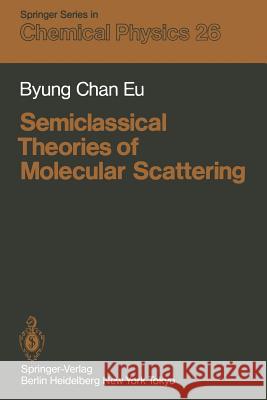Semiclassical Theories of Molecular Scattering » książka
Semiclassical Theories of Molecular Scattering
ISBN-13: 9783642881671 / Angielski / Miękka / 2012 / 232 str.
The study of molecular collisions at energies from less than about 100 eV 3 down to a few 10- eV, which is roughly the range of chemical interest, has greatly expanded in the last 10 to 20 years. As in many fields, this activity has been stimulated by parallel advances in theory which have triggered the autocatalytic positive feedback system of experiment challenging theory and vice versa. Possibly the biggest driving force, however, has been the growing awareness that molecular collisions are important in our understanding of na tural and man-made environments. Molecular collision dynamics is now studied in connection with molecular formation in interplanetary space, upper atmo sphere chemistry, plasmas, lasers and fusion reactors, and is crucial for understanding gas-dynamic flow processes, gas-phase chemical reactions and catalysis. Despite the great strides made in studying elementary collisions in laboratory scattering experiments, many of the processes in these areas are too complicated for us to hope ever to study them in detail in the labo ratory. Thus in the long run we shall have to rely on theory. Initially, I think many of us, like myself, had hoped that the development of fast compu ters would outpace the demands on computing time so that "brute force" quan tum-mechanical exact calculations would provide all the answers. Unfortunate ly this has not been the case and efficient approximations are needed. They can be broadly classified as classical, semiclassical or semiquantal."











